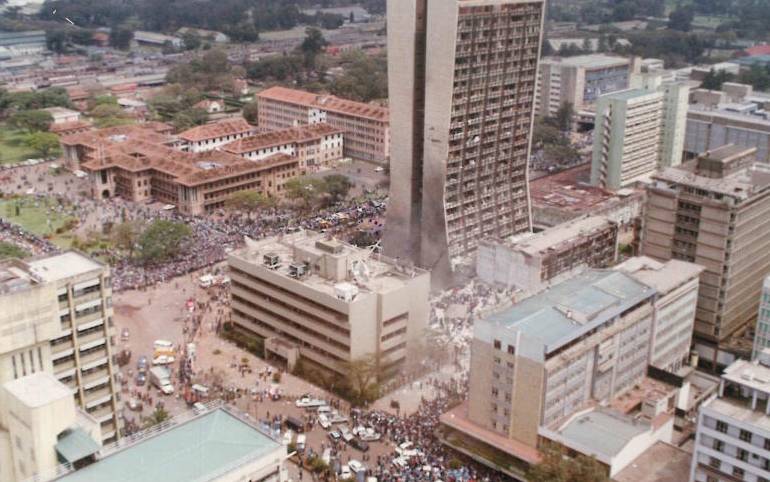×
The Standard e-Paper
Stay Informed, Even Offline

The grotesque sight in Nairobi after a bomb went off blowing buildings and injuring people on the streets in 1998. [File, Standard]
After the dust had settled on the twin United States embassy bombings in Nairobi and Dar es Salaam, investigators from the three countries came up with 21 names of possible plotters of the attacks that left more than 250 people dead and about 5,000 injured.